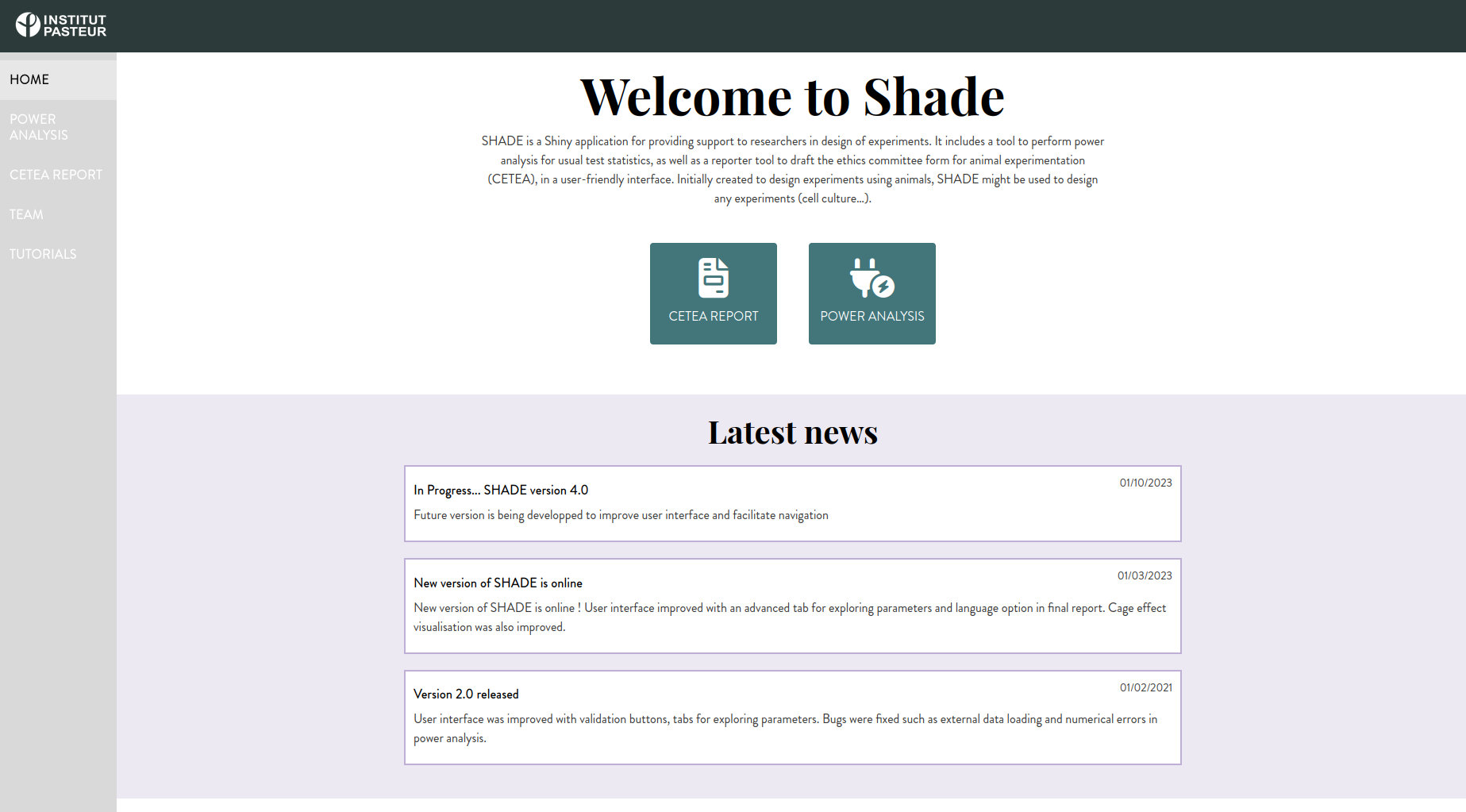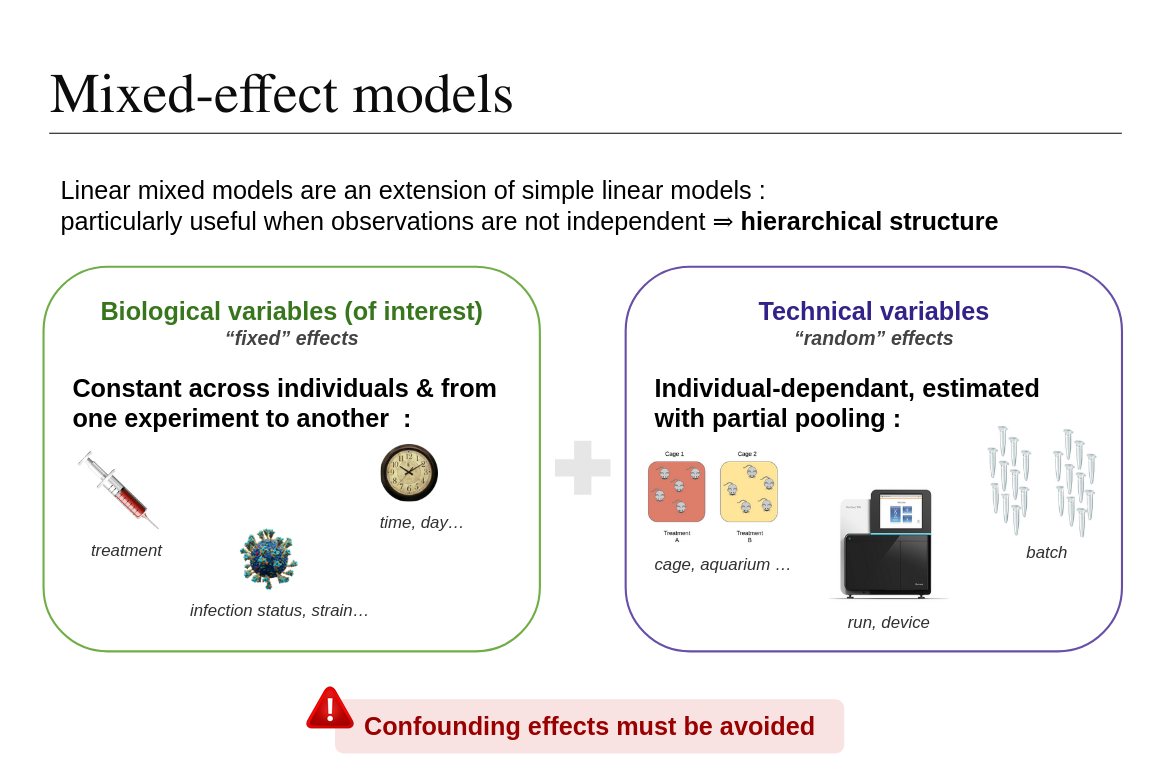
We currently observe some incompatibilities with Safari browser.
We're working on fixing them, but on the meantime we advise you to use some other navigator like Firefox or Chrome.
Mix & Pick
Minimize biases when assigning groups
Starting from a given dataset, Mix & Pick allows you to allocate individuals as randomly as possible into homogeneous groups,
according to quantitative and/or qualitative variables.
Different propositions of assignments will be presented with visualisations and statistical analysis. A downloadable results table with final groups will be generated, along with an analysis summary report for reproducibility.
You can also use our visualisation tool to check if your pre-existing groups are well-balanced.

Latest news
30/11/2023
New version available
Mix & Pick version 1.0 is released, improving user experience & navigation.
22/05/2023
Mix & Pick is online !
Shiny application integrating Mix&Pick algorithm and visualisations is available online.
22/01/2023
Mix & Pick algorithm
Implementing two methods to generate homogeneous randomized groups, taking into account a set of quantitative and/or qualitative covariables.
Loading your data
The first step consists to load the datatable :
- Drag your variables according to their type : quantitative (eg. weight, height) or qualitative (eg. gender, cage, strain)
- Select an ID column, if you have one. Make sure that your ID column uniquely identifies each row in the datatable. If no identifier is specified, the application will take the datatable row numbers by default.
- Once the data has been checked and approved, validate to move on to the next stage.
Running simulations
The second step consists to define your experiment design and set some parameters :
- Choose the number of groups and define their sizes and names.
- Select an assignment method.
- Optional : modify advanced parameters depending on the chosen method.
- Once you are okay with your design, you can launch the simulations.
Define your expected design
Enter group sizes & names. Add as many groups as you need with the buttons.
Group sizes
Group names
Add/remove groups
Critical variable
Permutation is the quickest method, but Integration algorithm gives better results, especially when dealing with a small number of groups and / or small group sizes. You can launch Permutation method first and switch to the second one if the results are not satisfying.
Advanced parameters
One last check before running ...
Computations might take some time, depending on the size of your dataset. If you get disconnected, please refresh and try again with a lower number of simulations (see advanced parameters).
Outcome
This last step provides several visualisations and statistics to check the best assignment candidates :
- Check generated barplots for qualitative variables and boxplots for quantitative variables. Statistical tests are performed to ensure that groups are not significantly different regarding any covariate
- Chose a final assignment among the ones presented. A final table with the selected assignment column can be exported as CSV file
- Generate a report summarising the various stages of the analysis in HTML or PDF format
Visualisation of the results
Show outgroup category ?
Select an assignment :
Plots :
Desc. Table :
Here is applied a One-way ANOVA test for quantitative variables and a Fisher's exact test for qualitatives variables.
If some pvalues appear in red, you should select another canditate. If no candidate seems suitable, go back to simulation step and try to launch with the other assignment method and/or change some advanced parameters (eg. increase number of simulations).
Export your results
You can export the table below to a .csv, .xls or .pdf file. It contains your initial data table with an additional column for the chosen group assignement.
Download report
You can also save a report summarizing all the chosen parameters, technical info and results to ensure reproducibility.
Loading your data
The first step consists to load the datatable :
- Drag your variables according to their type : quantitative (eg. weight, height) or qualitative (eg. gender, cage, strain)
- Select an ID column, if you have one. Make sure that your ID column uniquely identifies each row in the datatable. If no identifier is specified, the application will take the datatable row numbers by default.
- Once the data has been checked and approved, validate to move on to the next stage.
Outcome
This last step provides several visualisations and statistics to check that your groups are well-balanced
Visualisation of the results
Show outgroup category ?
Plots :
Desc. Table :
Here is applied a One-way ANOVA test for quantitative variables and a Fisher's exact test for qualitatives variables.
If some pvalues appear in red, your groups are not perfectly balanced. You should probably re-generate them if you have the possibility.
Mix & Pick team
Mix & Pick is an application developed by members of the Hub of Bioinformatics and Biostatistics of the Institut Pasteur.
It provides support to Pasteur research units in Bioinformatics and Biostatistics. The list of the services offered by the Hub are detailed hereafter:
- Short questions : if you have a simple question about bioinformatics and / or statistics, you can ask your question on this website . A mail is sent to all Hub members and one of them will answer you within a few hours.
- Open desk : come and discuss about your data, your project, your analyses or just about bioinformatics and (bio-)statistics every Tuesday morning from 10 to 12 in Yersin Building (24) 1st Floor. Hub members with complementary fields of expertise will be ready to answer your questions and discuss with you.
- Collaborative projects : you are starting a project or you are planning experiments? You need advice and / or help in bioinformatics and (bio-)statistics to design your experiment and analyze your data, or develop a specific software? Please submit a project here . Dedicated Hub members can be involved in your project from the beginning.
You may find more information about the Hub of Bioinformatics and Biostatistics on the team webpage .
Click here to contact the Mix&Pick authors by email.
Check out our other applications
We developped other Shiny apps to help you with experimental design. Do not hesitate to have a look !







